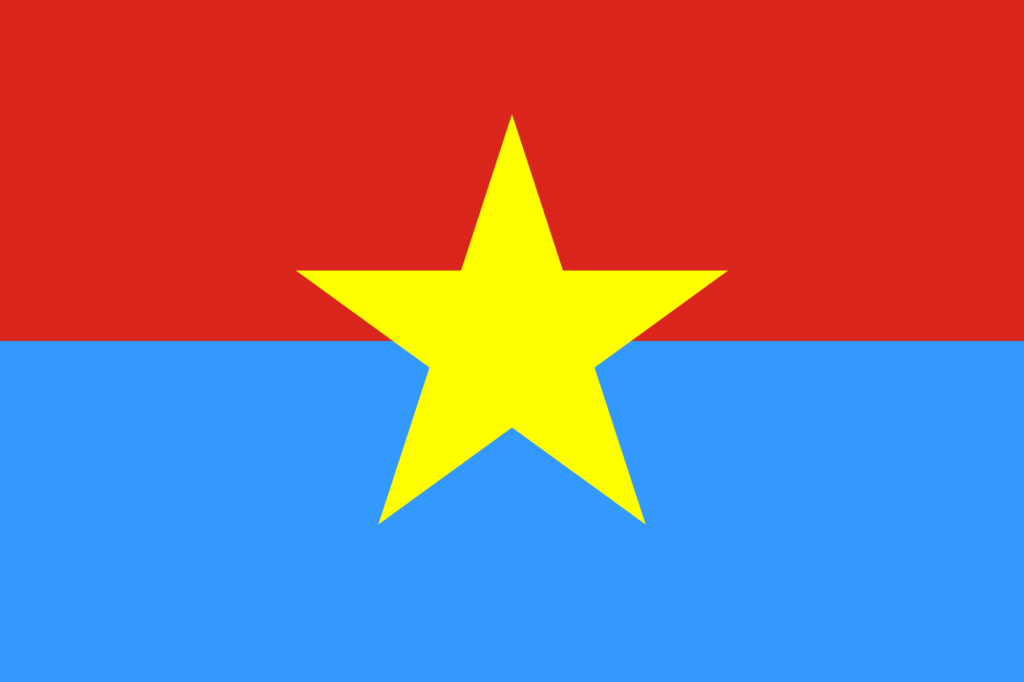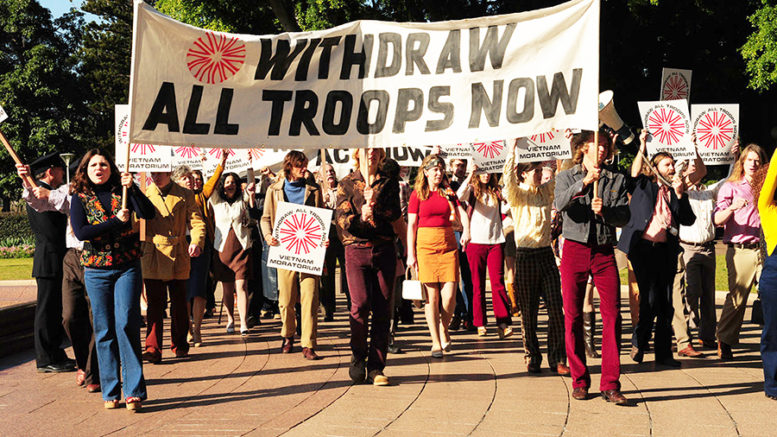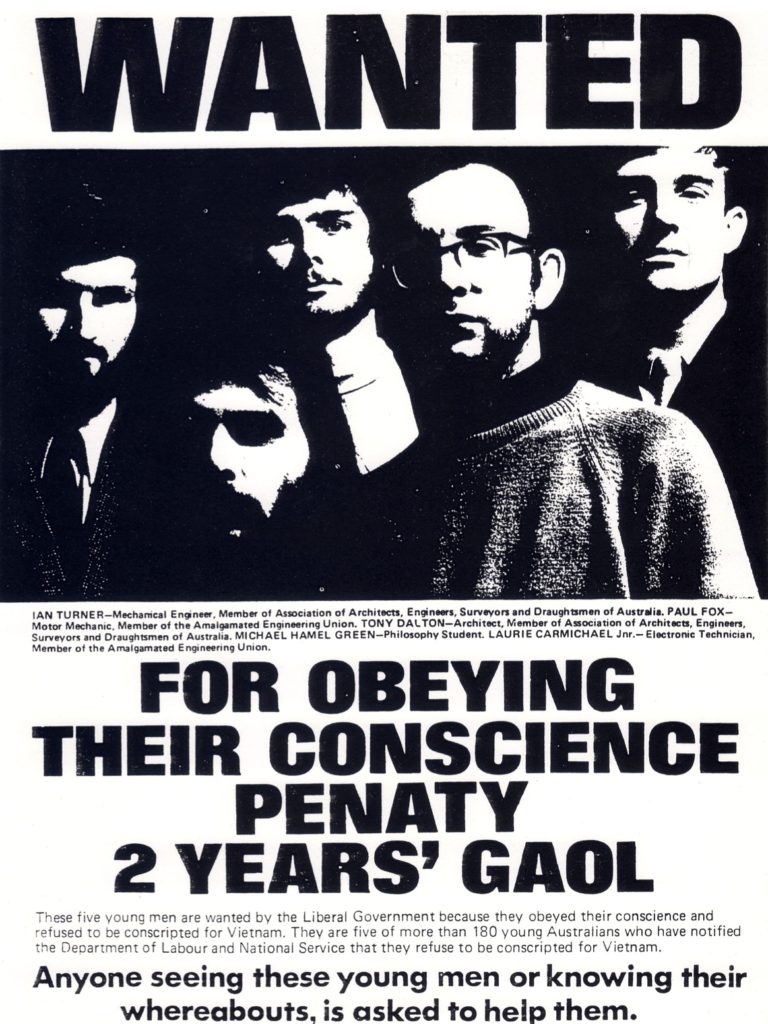Contributed by Glen Davis
July 4 demonstrations were an early feature of opposition to the undeclared war in Vietnam.
The first one conducted in Melbourne was held in 1965. there was a march to the outside outside of the United States (U.S.) Consulate. Speeches were made, a petition was handed to US consulate officials, and then people quietly wandered off into the Melbourne night.
In 1967 there were differences among the organisers, and there was a radical proposal for a planned sit-down and burning a U.S. flag. Those pushing this approach, were persuaded by the majority to not press on with it for the time being.
Twelve months later it was different proposition. This year, it was going to be unlike any of the previous July 4 demonstrations.
Any expectations in 1968 that there would be another peaceful, quiet event were put to rest. As Bertolt Brecht would put it; ‘wie esist, wird es nicht bleiben’ (as it is, it will not remain).
On a cold winter evening, the march started peacefully. As in previous year, two of the participants delivered a petition to consulate officials, calling for a cessation of the undeclared war. They were promised a response in the mail.
Others made speeches using megaphones, and National Liberation Front (NFL) flags flew. A crowd of thousands, the mood was heating up. This was going to be no mere stroll down St Kilda Road.

The Flag of the National Liberation Front, which were the forces fighting the U.S. led occupation in the south of Vietnam
The burning of a US flag indicated a different protest than was previously experienced. The police moved to apprehend those responsible for the act. Chants of, LBJ, how many babies did you kill today, and 1, 2, 3, 4, the NLF will win the war filled the air, as the demonstrators sought to make their position to the war clear to all.
Focus had changed, from a peaceful stroll on a cold winter evening, to a militant expression of anti-American imperialism.
Commercial Road, where the US Consulate then was, had been blocked off by a police barrier. This angered the crowd, who had been intending to deliver their massage all the way to the front door. A Group broke through the line. There were too many police on the other side, and they were roughly hauled back.
This as the signal for a major police offensive, and the police moved in, cracking skulls with batons along the way.
Over the next hours, the battle made its way back along St Kilda
Road, facing ongoing police attacks aimed at the dispersal of the crowd, and back into city streets, where it continued for hours. Melbourne had not seen the like of it since the depression of the 1930’s.
The impact was that July 4 demonstrations would now have a militant character, for as long as the war continued. It also signaled that within the anti-war movement, a current that suggested that the other side was in the right, defending its own home, was growing and transforming the movement from only being anti-war, into a movement for justice.
Rather than isolating the anti-war movement, the rise of militancy brought the matte into sharper public attention, and made a considerable contribution towards changing the tide of opinion. This lead to the Moratorium movement, which first emerged ion the following year.



Be the first to comment on "The origins of the July 4 anti-U.S. demonstrations in Melbourne"